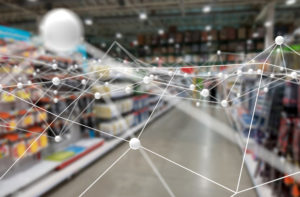By Cat Davis, Group Marketing Director, MISSION Group and krow Group
Over the past year most of us have seen our social, work and family life shrink to a glimmer of their former glory. Digital channels have taken a new precedence in our lives, as we’ve learnt to rely on virtual interactions with friends, family and even brands. There has been a huge impact on all aspects of marketing, from channel mix to messaging, as businesses adapt to the changes in consumer needs and demands brought about by this new home-bound way of life.
Life on the smallest screen
With physical stores closed, the ever-rising consumer appetite for ecommerce has climbed to new heights. Before brands even had a chance to pivot their marketing strategies, e-commerce revenues started to spike by up to 50% .
Ecommerce giants have cashed in, but not all businesses were ready to rely solely on their digital channels. This period has served to highlight the critical importance of digital user experience and businesses should consider all aspects of a customer’s interaction with them online, from the first click to managing returns and complaints remotely. Brands that can understand and respond to the frustrations and barriers to purchase will reap the rewards when it comes to converting browsing to buying.
We’ve also seen the emergence of some powerful new marketing tools designed to capitalise on the huge captive audience of at-home shoppers. A great example of this is the boom in livestream shopping which has been led by China over the past year but is now picking up pace across the rest of the world, as the combination of real-time product demonstrations and reviews alongside live chat functions and in-platform purchasing proves to be a huge hit for online retailers. It is predicted that livestream shopping could generate a revenue of more than CHY1 trillion ($150 billion) in 2020, making it an attractive option for struggling high street retailers in particular.
Solving everyday problems digitally
I think I speak for us all when I say that hairdressers have been amongst those most dearly missed during 2020. Brands in the haircare sector have been quick to acknowledge this loss, whilst finding a clever way to still connect with their customers during lockdown by creating home styling tutorials and how-to content to help them attempt to recreate the salon look and feel in their own homes.
How-to videos aren’t new in the marketing world, but social media platforms are giving brands a fresh way to share this content. By April 2020, TikTok had been downloaded more than 2 billion times . Teenagers and adults alike scroll through life-hacks and demos, and big-name brands like Nike, Lush and Gucci have jumped on the bandwagon as it’s become clear the app is shaping shopping behaviour.
For businesses which traditionally rely on in-store purchases, we have seen an acceleration in the adoption of new technology that offers a genuinely useful and valuable service. DIY and home decoration brands now offer sophisticated apps and tools that allow customers to see what a particular paint colour or kitchen layout would look like in their own homes by simply uploading pictures of their room.
By providing practical, informative and helpful content which addresses some of the new challenges we are now faced with, in our home-bound worlds. Brands have the opportunity to not only convert more sales online, but also build a more meaningful connection with customers by offering something of benefit in return for their attention.
Brand building through emotional connections
Despite these trends, it’s critical not to forget about the importance of creating an emotional connection between brand and consumer. This is particularly pertinent in these unsettling times and research from the Data and Marketing Association showing 74% of brands now have a renewed focus towards being more compassionate with customers . There has never been a better opportunity for brand building done well, as consumers are increasingly looking to engage with trusted, familiar and reliable brands.
The big supermarket chains and retailers were quick to recognise this opportunity around Christmas, during the traditional time of the big budget festive campaigns. Rather than changing tactics and focusing hard on product and sales messaging, most chose to continue to build their emotional relationship to customers by producing ads that reflected the collective challenges we are all facing, whilst offering a moment of comfort and/or nostalgia. According to System 1’s Christmas ad league table the top three ads from Coca-Cola, Aldi and DFS all featured characters and scenarios that consumers were familiar with, as well as an emotional narrative.
As the end of lockdown remains a bright glimmer in the (hopefully) not too distant future, there is still plenty of scope for brands to adapt their marketing plans to reflect the many changes in consumer behaviours and requirements. The winners will be those which identify and utilise the opportunities presented by home-bound marketing to build relationships with their customers which will last, no matter what the future brings.









